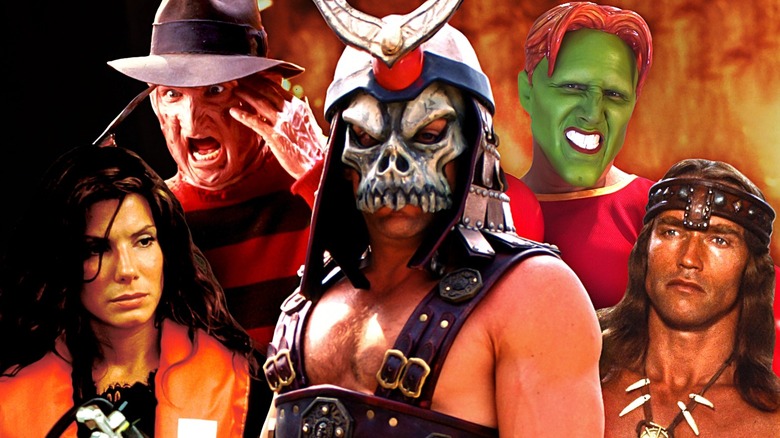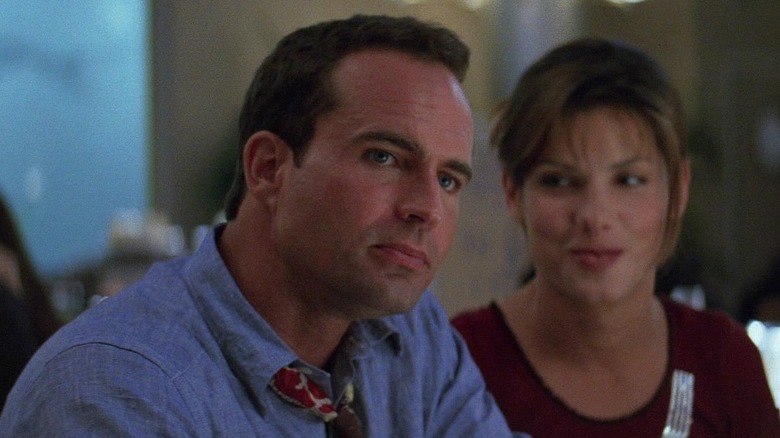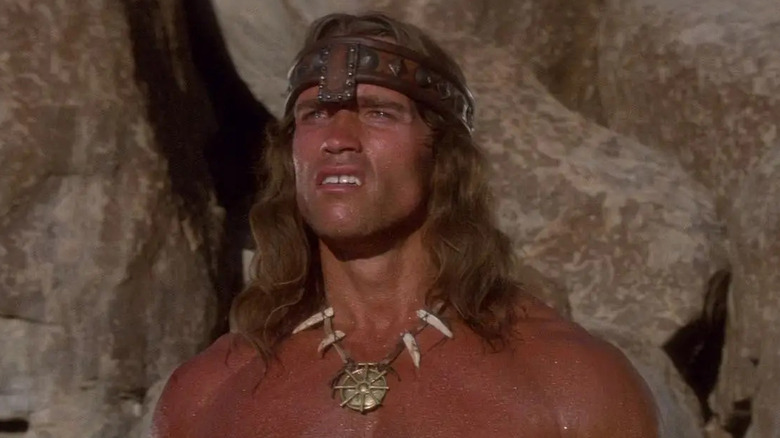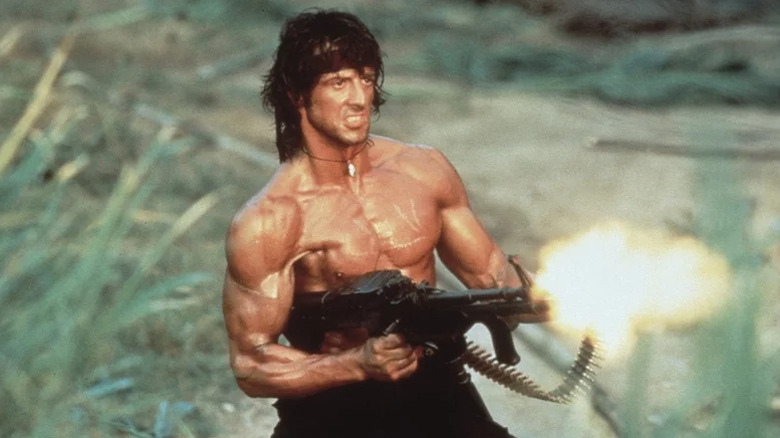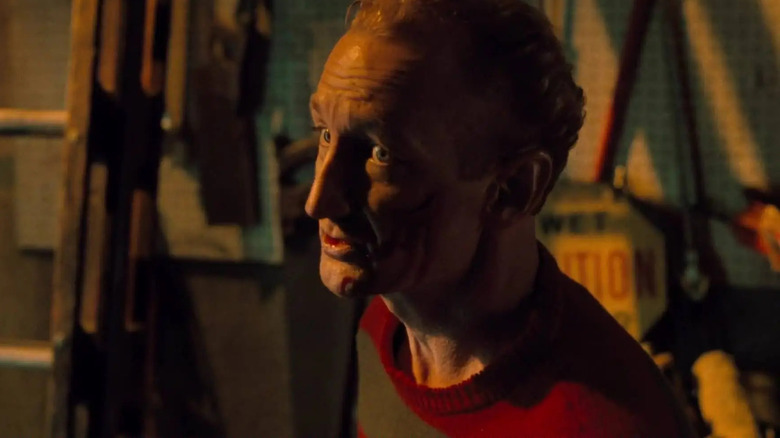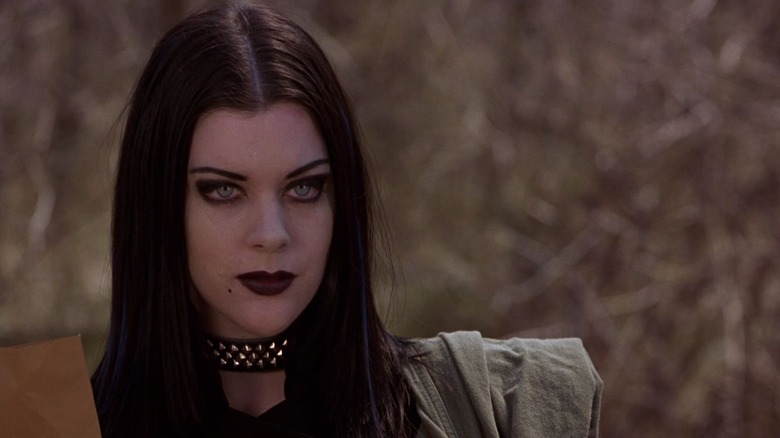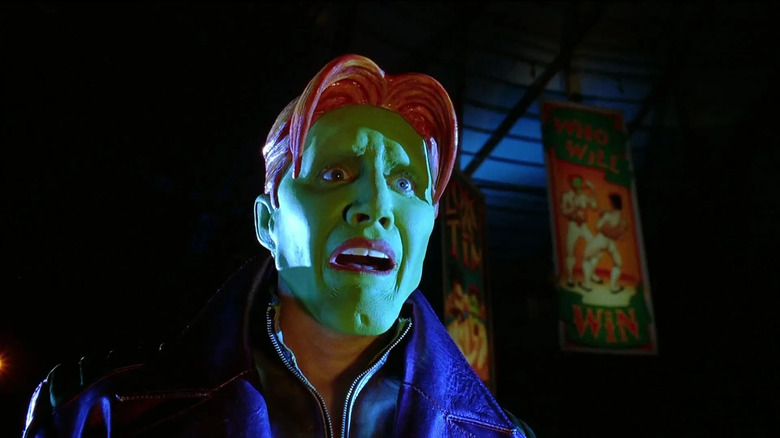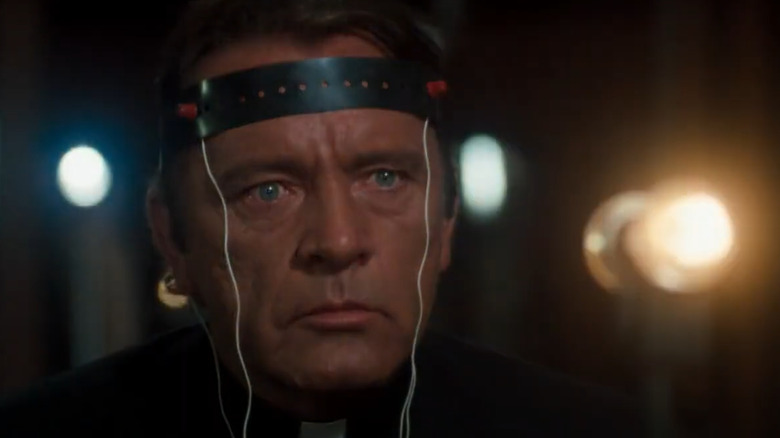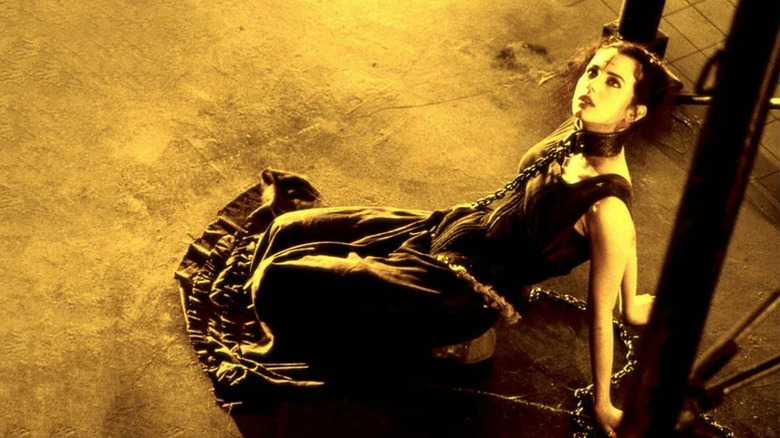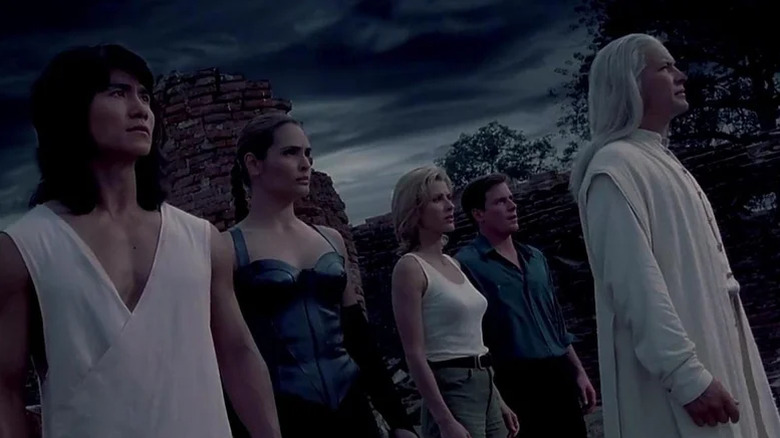The 15 Worst Movie Sequels Ever
If you think sequels are bad now, you should have seen them a couple decades ago. Today, franchises are so ubiquitous that the studios take time to get them as right as possible, securing the original stars and trying to write stories that equal their predecessors. At the dawn of the blockbuster era, however, sequels were seen as cheap cash cows to be rushed out as quickly as possible while people still remembered the original. Nowadays, we know that nostalgia can overcome most of that and keep some properties around forever.
If you're wondering why your least favorite "Star Wars, "Star Trek," or "Superman" isn't on this list, it's simple: when you have an actor associated with an iconic character who continues to commit to the role, it elevates even "Superman IV: The Quest for Peace." It's hard to hate a movie that has Christopher Reeve in the tights, or Leonard Nimoy in pointy ears, or Ian McDiarmid in a Sith robe. It is much less hard to hate the other films listed below.
These are the 15 worst movie sequels ever.
Speed 2: Cruise Control
For those who do not remember the pre-Keanaissance, there was a period there in the '90s when Keanu Reeves was thought of as a lightweight punchline, particularly after audiences heard his "English" accent in "Bram Stoker's Dracula." "Speed" was a movie that got him back on track, using Reeve's natural Zenlike cool. When he bailed on the sequel because he hated the script, though, director Jan de Bont figured he could replace Reeves with virtually anybody else. Jason Patric was Sandra Bullock's suggestion, and there's a reason nobody utters the phrase "action star Jason Patric."
The idea of setting the sequel on an out-of-control cruise ship wasn't great; "Under Siege" had already done "Die Hard" on a boat five years earlier, and that was on a battleship, much more exciting kind of boat. Still, Bullock tries mightily, and Willem Dafoe plays a villain who attaches leeches to himself. Despite that, it's an utterly forgettable follow-up. The first "Speed" also seems to have been a fluke for director Jan de Bont, whose subsequent films like "Twister" and "The Haunting" were bloated and unwieldy.
Conan the Destroyer
"Conan the Barbarian" is a classic of R-rated fantasy, not to mention perhaps the purest essence of director John Milius' alpha male ideals projected onscreen. Treated as a force of nature, Arnold Schwarzenegger uttered few lines and let his physicality do the talking, and any humor comes from how dedicated the characters are to violence.
The sequel, which went PG to try to capture a larger share of the family audience, tries to be funny, and isn't. Milius was unavailable, and Richard Fleischer proved to be no substitute. With badly animated effects, Andre the Giant in a cheap monster suit, and the one and only onscreen performance of basketball player Wilt Chamberlain, it all felt a bit beneath Schwarzenegger by that point, as "The Terminator" came out the same year. Some sex and nudity was cut to get a lower rating, but adding it might not have helped. Fleischer was known for being versatile, while Milius was a brutal action guy through and through.
Conan can be family friendly, as his Marvel comics were, but the Arnold version was never meant to be.
The Chronicles of Riddick
David Twohy's "Pitch Black" was a taut "Aliens" rip-off with a twist that also effectively served as a coming-out party for Vin Diesel as an action lead. Twohy set out to make the sequel much bigger and bolder, creating an elaborate mythology and trilogy arc for his dark sci-fi universe. Unfortunately, he seemed to think the best way to get that mythology across was to have characters deliver exposition full of made-up names in large chunks, and it just comes across silly.
Twohy's vision of a dark universe, on paper, could have played like a mashup of Conan and "The Mandalorian." Instead, it's a series of setpieces held together by lore that the actors don't seem to actually understand. The director's imagination is simply bigger than his ability to execute it. The movie ends on a major cliffhanger, which ended up being almost completely brushed aside for the threequel, simply titled "Riddick."
Somehow, Twohy and Diesel are still planning a fourth installment, though they've never come close to touching the quality of the first one.
Rambo: First Blood Part II
It may seem odd to have a huge hit such as "Rambo" on this list, as it became instantly iconic in popular culture. However, consider what it was actually a sequel to. "First Blood," the original, is the story of Vietnam veteran John Rambo, harassed to a breaking point by local law enforcement who are Korean war vets and see him as a loser. He ultimately surrenders and has an emotional breakdown. In the novel, his mentor Sam Trautman shoots him in the head. Stallone saw sequel potential instead, and thought Rambo could be made more sympathetic.
Then, for said sequel, Rambo goes back to Vietnam to see if there are still American P.O.W.s there. It turns out to be a set-up and he's captured by the Soviets, but he ends up taking them all on and winning anyway, metaphorically striking not only a blow for Cold War superiority, but also effectively getting revenge for the U.S. failing to win the Vietnam War. He's now a superhuman, all-American killing machine who mows down all Commies and traitors.
Aliens vs. Predator: Requiem
Somewhere in the middle of this franchise-worst film (for both franchises it mashes up) is maybe a 30-minute or so silent short that would be worth watching, focusing on the Wolf Predator and his unsuccessful xenomorph eradication mission. Unfortunately, there's a whole poorly lit feature wrapped around it, and it's not a good one.
Prior to this installment, every "Alien" movie had been made by an auteur director with a distinctive vision: Ridley Scott, James Cameron, (then-unknown) David Fincher, Jean-Pierre Jeunet, and even Paul W.S. Anderson. "AVP:R" was given to makeup artists The Brothers Strause, who created some nicely icky creatures only to bore us with their cardboard human characters.
As dullards meet their demises, the only tension is how exactly this present-day story can exist in "Alien" and "Predator" continuity. The equally boring answer is that a nuclear bomb wipes everything out at the end...except our memories.
Freddy's Dead: The Final Nightmare
One of the strongest aspects of the "Nightmare on Elm Street" sequels was that they mostly kept the same continuity. Yet "Freddy's Dead," the sixth installment, completely memory-holed Alice (Lisa Wilcox), the heroine of parts 4 and 5, beginning with a time jump ten years into the future (which would have meant the year 2001). The film then tries to make it a mystery as to who the secret child of dream killer Freddy Krueger (Robert Englund) is, even though the math doesn't add up for any of the teen characters (Freddy was originally killed in the '80s) and could only be Lisa Zane's Maggie.
Featuring a then-unusual 3D sequence for its climax, and several high-profile cameos like Johnny Depp, Alice Cooper, and Roseanne Barr, "Freddy's Dead" was meant to play as a grand finale and went over like a wet noodle, with Freddy at one point turning his signature knife-glove into a Nintendo Power Glove.
Three years later, series creator Wes Craven would give the franchise a proper finale with the meta-horror "Wes Craven's New Nightmare." ("Freddy vs. Jason" was just the final after-dinner cocktail.)
Beverly Hills Cop III
The "Beverly Hills Cop" films (here ranked worst to best), while primarily showcases for Eddie Murphy's comedy, have also typically featured top-tier directors. The original had Martin Brest, the sequel went to Tony Scott, and the threequel went to John Landis, who was primarily a comedy guy. Though he had handled car chases in "The Blues Brothers," he largely and wisely avoided directing action after his helicopter stunt in "Twilight Zone: the Movie" ended in fatal tragedy. When he got "Beverly Hills Cop III," he was in a slump, coming off two poorly received mob comedies — the Sylvester Stallone bomb "Oscar" and the vampire-themed "Innocent Blood." It did not get better for him or the threequel.
"The Room" star Greg Sestero once wrote a "Home Alone" sequel set in Disney World; what ensues in "Beverly Hills Cop III" plays about like that, with Eddie Murphy's Axel Foley tracking down criminals in a theme park, and the most action being a series of Mario-like jumps on a Ferris wheel. Murphy would survive but Landis followed up with the direct-to-video "The Stupids" and the equally unpopular sequel "Blues Brothers 2000." He has mostly stuck to TV since.
Book of Shadows: Blair Witch 2
At one time the most profitable movie ever made, "The Blair Witch Project" polarized moviegoers in 1999 while using the marketing power of the Internet. It kicked the found footage subgenre into gear, and made many viewers unsure if the unknown actors onscreen had actually disappeared in real life.
How do you follow that? A few years later, the "Paranormal Activity" series would demonstrate that you can just do more of the same, many times over. The "Blair Witch" sequel went another way, using a mix of film and video to create a scripted story in which a "Blair Witch" superfan leads tour groups to the original film's location; they lose consciousness and awaken to realize something terrible happened when they blacked out. Directed by acclaimed documentarian Joe Berlinger ("Paradise Lost"), the resultant film plays against all his strengths.
Though it has gained a cult following in subsequent years mainly for daring to be different, it remains an ambitious idea poorly executed.
Highlander: Endgame
"Highlander II: The Quickening" gets most of the grief for daring to follow an original fantasy about immortal warriors by jumping into the future and revealing that they're aliens from the planet Zeist. Even at its worst, though, it's still a sci-fi movie with Christopher Lambert and Sean Connery fighting Michael Ironside with swords. "Endgame," the fourth and final theatrical feature in the series, is an altogether different sort of crapfest.
To recap: the original "Highlander" posited a race of immortals who had to behead each other until "there can be only one" who claims "the prize," the power of every immortal who ever lived. At the end of the film, the winner is French-accented Scotsman Connor MacLeod (Christopher Lambert). The "Highlander" TV series posited that Connor hadn't actually won the prize because there were more immortals, including his fellow clan member Duncan (Adrian Paul).
Now, it's one thing to have movie star Lambert appear on the TV series in a cameo to give the rub to the next guy. It's another for both of them to do a movie together, and have Paul's Duncan kill Lambert's Connor; arguably a bigger slap in the face than Zeist.
Son of the Mask
Prior to his recent comeback in the "Sonic the Hedgehog" franchise, Jim Carrey tended to avoid sequels after "Ace Ventura: When Nature Calls" had disappointed him as an actor. Carrey turned down $10 million to return to "The Mask"; Jack Black also passed. Warner Bros. had already been working with Jamie Kennedy on some cancelled TV projects, and they went with him. Alas.
Kennedy is funniest in small doses, but the script also failed him — the original movie very loosely followed the comic book, albeit with a more PG sensibility. The sequel dumbed it down even more, expanding on the references to Loki in the first film by having Loki be an actual character campily played by Alan Cumming, with Bob Hoskins as father Odin. Meanwhile, Kennedy's character Tim Avery impregnates his wife while wearing the mask, giving them a super-powered baby. There's an entire franchise called "Baby Geniuses" that demonstrates why that's a bad idea.
Ironically, "Son of the Mask" may have helped spawn a better sequel. Nine year-old Mary Mouser, who provided some of the baby's vocal sounds, would go on to star in "Cobra Kai" as Sam LaRusso.
Exorcist II: The Heretic
With their 1980 book "The Golden Turkey Awards," Michael and Harry Medved may have revived Ed Wood's career when they dubbed "Plan 9 From Outer Space" the worst movie of all time. In second place? John Boorman's sequel to "The Exorcist." So how did a movie directed by Boorman, scored by Ennio Morricone, and starring Richard Burton, Max von Sydow, Louise Fletcher, and James Earl Jones go so wrong?
Maybe start with the fact that neither William Friedkin nor William Peter Blatty were involved. Proceed through budget cuts that substituted gritty, real locations with a blatantly soundstaged version of Ethiopia. Throw in Boorman falling ill for a month, and not even liking the original film that much. Then there's an over-reliance on scenes of extremely fictionalized hypnosis, and the overt sexualizing of not-yet-18 Linda Blair, which was strictly Satan's territory in the original. The sci-fi vibe of the sets is goofy fun, and Boorman effectively directs several disorientingly weird moments, only to defuse them with silliness like James Earl Jones in a locust costume.
The Crow: City of Angels
Even if the movie itself hadn't accidentally killed star Brandon Lee, "The Crow" is not a story that lends itself to sequels, as it's the self-contained story of rocker Eric Draven returning from the dead to avenge the murder of himself and his girlfriend. Once that's done, he dies again. That didn't stop Miramax, which tried multiple bad knock-off stories, beginning with "City of Angels," which saw a grown-up Sarah (Mia Kirshner) move from a stylized, dark version of Detroit to a stylized, dark version of Los Angeles, where she encounters Ashe (Vincent Perez), another revived dead man with Crow powers, which she recognizes. She also encounters drug kingpin Judah Earl (Richard Brooks), who wants to steal those powers.
Sarah ends up being murdered by Judah, who is killed by a magic flock of crows. Ashe drives away on his motorbike, to...where? The transition is so bad it's unclear if he's promptly having a memory of his dead son, or if he's somehow cycling into the afterlife. Maybe he's just going to hang out in L.A.
Mortal Kombat: Annihilation
1995's "Mortal Kombat" has dated somewhat, but when it came out, it was pretty radical as one of the first American movies to heavily use Hong Kong-style wire-fu action, and one of the first video game movies to take the source material seriously and be enjoyed by audiences for it. A breakthrough movie for director Paul W.S. Anderson, it felt like a guaranteed franchise starter. Then came the sequel, which replaced Christopher Lambert with James Remar as Rayden, and Bridgette Wilson with Sandra Hess as Sonya. The sets and costumes looked cheaper, and the special effects weren't even finished, with the terrible "animality" transformations among the worst CG monsters of all time.
In an attempt to cram in as many characters from the games as possible, director John R. Leonetti rendered the story barely coherent. Leonetti, who usually works as a cinematographer, may have been out of his depth in his directorial debut, but bad sequels became his thing for a while, as his next two films were "The Butterfly Effect 2" and "Annabelle."
Trail of the Pink Panther
Six films into the series, the "Pink Panther" movies were already being accused of metaphorically beating a dead horse, but for the seventh they did so almost literally. Star Peter Sellers died before production even began, so his scenes consist entirely of outtakes and alternate takes from the previous movies. To give them some kind of structure, new scenes were shot of Joanna Lumley as a reporter looking for the missing Inspector Clouseau. Simply put, the end result was a mess and earned scathing reviews upon its release in 1982.
Sellers' widow Lynne Frederick filed a lawsuit, on the grounds that Sellers was a perfectionist who had never previously consented to have his outtakes released. Though she was awarded over $1 million in damages, the judgment didn't come in time to stop the movie. Though the film, unsurprisingly, was a critical and commercial failure, it was shot concurrently with a non-Sellers sequel, "Curse of the Pink Panther," which replaced Clouseau with a new character named Clifton Sleigh (Ted Wass), an incompetent NYPD officer. That choice proved equally unpopular, and the franchise laid dormant for ten years until Roberto Benigni starred in "Son of the Pink Panther," which proved in its failure yet again that a living, breathing Sellers as Clouseau had always been the real draw.
Cocoon: The Return
"Cocoon" is a funny, charming Ron Howard sci-fi movie about old people who become physically rejuvenated when they accidentally come upon a swimming pool full of cocooned aliens. Even though they screw things up so badly that one of the aliens dies, the rest offer to let them come back with them to planet Antarea where the seniors can live in eternal youth. And so they do. (Here's the "Cocoon" ending explained.)
These days, it's usually legacy sequels decades later that kill of the previous main characters; "Cocoon: The Return" only arrived three years after the first to take back most of its happy finale. The aliens come back to Earth for the rest of the cocoons, allowing their new friends to pay family a visit; one promptly dies, and most of the rest decide they will opt to do so as well, save for one elderly couple whose rejuvenation has led to their expecting a baby. Director Daniel Petrie, known for dramas like "A Raisin in the Sun," lacks the fundamentally sunny worldview of Howard, and "The Return" ruins a fun, escapist fantasy with its unnecessarily sad reminders of reality.
